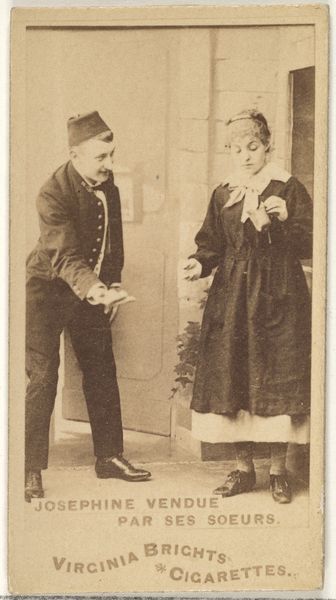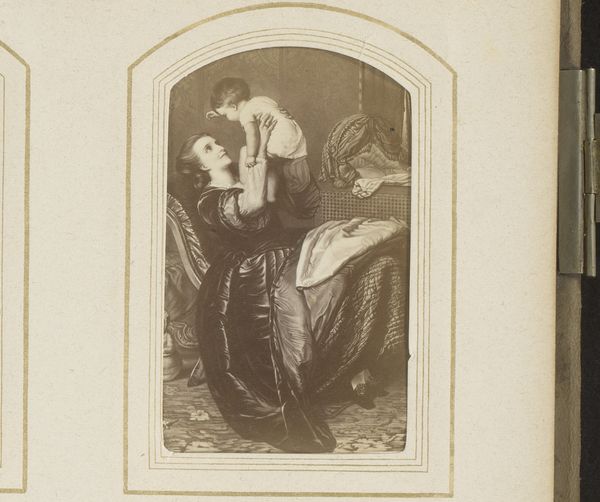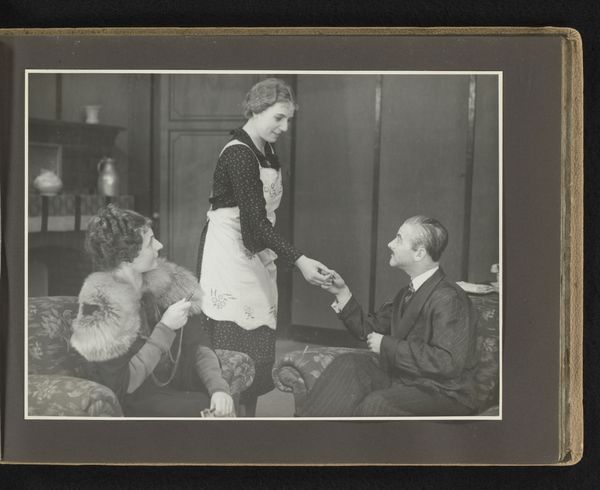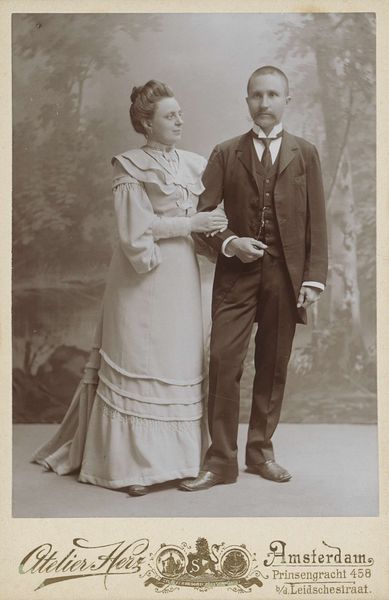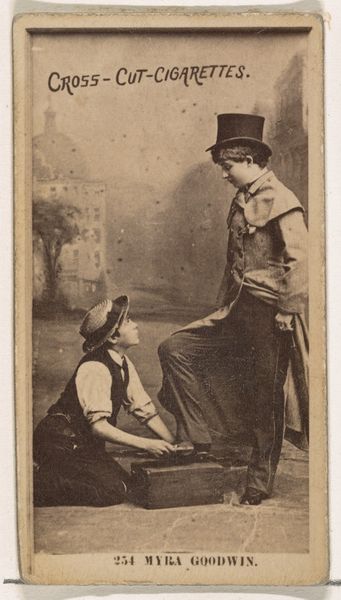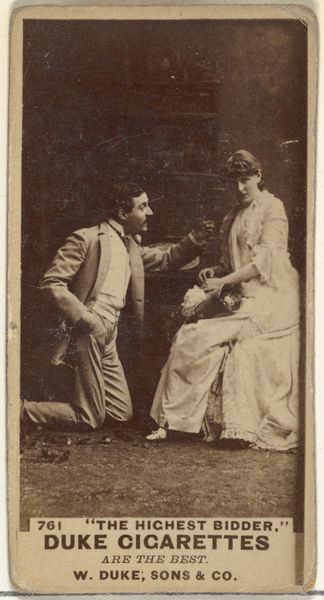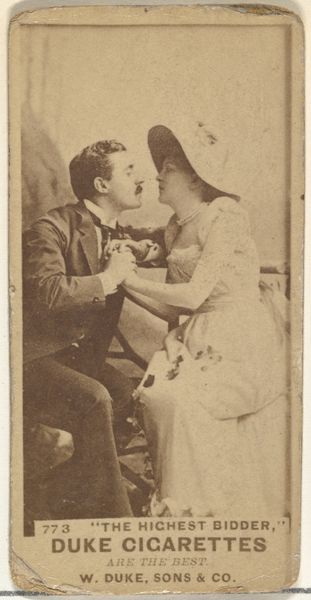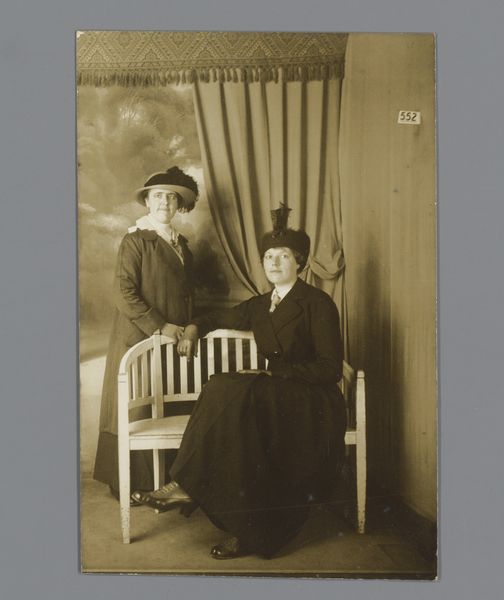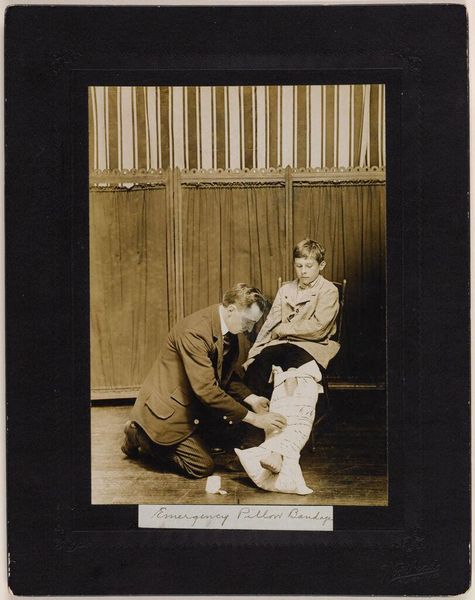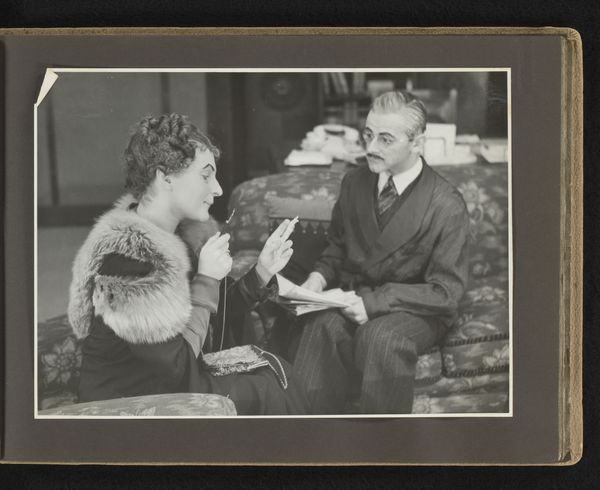
Opvoering van het toneelstuk 'De tante uit Indië' van Henri van Wermeskerken after 1928
0:00
0:00
photography
#
portrait
#
archive photography
#
photography
#
historical photography
Dimensions: height 224 mm, width 163 mm
Copyright: Rijks Museum: Open Domain
Curator: Here we have a photographic print by Vereenigde Foto-bureaux Amsterdam, titled "Opvoering van het toneelstuk 'De tante uit Indi\u00eb' van Henri van Wermeskerken," which translates to “Performance of the play ‘The aunt from India’ by Henri van Wermeskerken.” It's dated after 1928 and is currently held in the Rijksmuseum. Editor: What strikes me immediately is the palpable tension in this seemingly straightforward staged photo. There's something visually off-kilter about the arrangement and the actors’ expressions—or lack thereof. It projects a somewhat melancholic mood, if you ask me. Curator: I agree. These moments caught in theater, particularly from this era, carry the weight of societal expectations and aspirations. It's an interesting juxtaposition. Editor: Tell me more. What does the visual language convey in this play's publicity still? Curator: Well, theatre was very popular for all levels of Dutch society at that time. Going to the theatre as an activity helped give Dutch people a sense of self-understanding. In the image we are observing, the figure of the woman grabbing at the older man can speak to themes that appeared time and again: moral order versus chaos, money troubles versus love. Perhaps we can relate these binary oppositions to concepts that concerned ordinary Dutch citizens. The play's title hints at themes of colonialism and exoticism too, prevalent narratives during that time. Editor: True, there is an undeniable performativity. The texture within the scene is palpable—the woman's practical dress juxtaposed with the man's ornate velvet robe and the rather stiff set. I appreciate how the muted palette contributes to the pensive undertone. Curator: And how these stage moments offered a mirror, distorted perhaps, but reflecting the values and anxieties of the interwar period. Editor: I'll admit, considering it simply as a study of contrasting textures and implied narratives of cultural memory, it offers much food for thought. Curator: Indeed. Perhaps prompting us to question how cultural narratives can embed themselves within even seemingly candid moments.
Comments
No comments
Be the first to comment and join the conversation on the ultimate creative platform.

